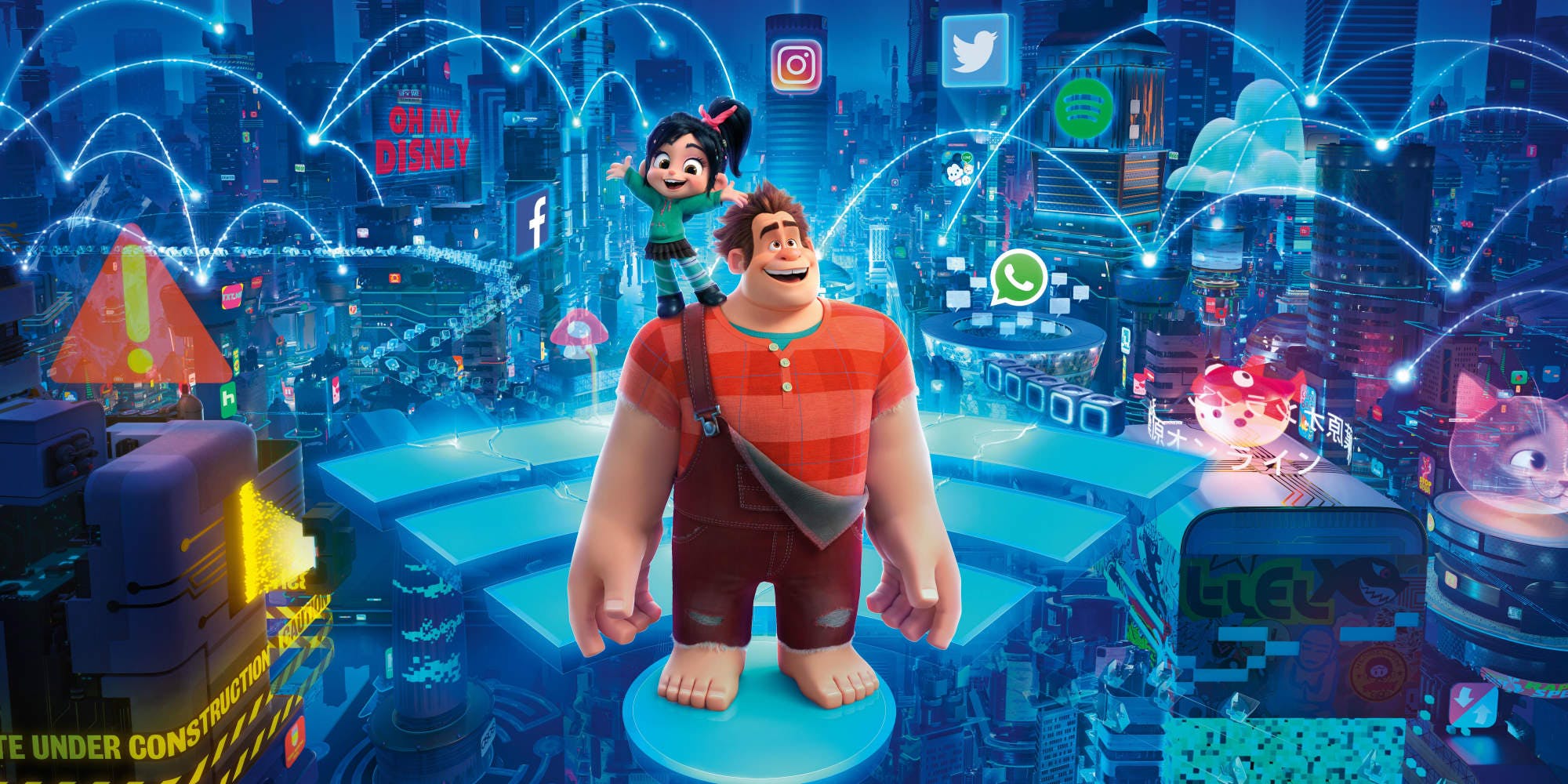Wreck-It Ralph was a hit for Disney in 2012, making fun of video games and stunted adolescence. Six years later, its sequel hits the theaters and is the rare one that equals its predecessor. In many ways, the internet is even more ripe for parody than video games, and Ralph Breaks the Internet skewers its many online targets with a lot of wicked wit. It also bites the hand that feeds it, parodying Disney princesses in one of the film’s funniest scenes. Most pleasingly, it is even more emotional than the first one, showing the characters grow significantly from before, even if it means they have to grow apart to do so.
Ralph (voiced by John C. Reilly again), the burly villain from the “Fix-It Felix” arcade game, toils away his days playing his role and spends his night hanging out with his best friend Vanellope von Schweetz (voiced by Sarah Silverman). She is one of the racers in the girlie video game “Sugar Rush” and has become bored with the same old races and victories in the program. When Ralph tries to rejigger the track to add some excitement for her, it ends up leading to the game’s steering wheel control getting busted.
Together Ralph and Vanellope discover that the owner of the arcade doesn’t plan to spend the $200 to replace the steering wheel, but the intrepid duo discovers that there’s one available on eBay, so they set out to get to the Internet to save her game. Once they get there, a world that is laid out like one ginormous city out of The Jetsons, the two of them are overwhelmed by all the websites clamoring for their attention. Pop-up ads take the form of humanistic characters hawking their offerings like drivers outside an airport. Transporting from one site to another happens via flying pods that whisk them away with super speed. The film displays a lot of imagination in how the webby world is presented, and most of it seems shiny and appealing, even if it’s all a bit chaotic.

The film, directed by Phil Johnston and Rich Moore, and written by both of them, as well as Pamela Ribon, Jim Reardon, and Josie Trinidad, both glorifies a lot of the web, but savages it too. They make fun of the sleazy, money grubbers offering get rich quick schemes on the periphery, the silly video content that earns millions of hearts on sites like YouTube, and the snarky way online gaming lures susceptible teens in only to screw them over when they come close to conquering a level. In particular, the film has a field day lampooning amoral racing games like Grand Theft Auto with a vicious parody called “Slaughter Race.” It’s presented as the worst neighborhood in town, run by thieves, sluts, and flame-thrower yielding miscreants.
It’s a far cry from the candy-colored “Sugar Rush,” and Vanellope finds it rejuvenating. She not only keeps up with the racers there, but she bonds with Shank, the fierce leader of a gang whose car Vanellope tried to steal. Gal Gadot voices Shank with both grit and warmth, and her sly character becomes a mother figure to the young girl. Their relationship infringes on the one she has with Ralph, and the big galoot is very protective of his little sidekick.
With these scenes, Vanellope starts to establish herself as a woman who’s not dependent upon male protection. If anything, Ralph needs her to help him out of more jams in the intimidating world of the internet. Despite using a little kiddie voice, Silverman’s vocal performance ensures that we hear the edge in her Vanellope’s delivery to show that she’s growing wiser and apart from the more Neanderthal-ish Ralph. Her maturation is given either further resonance when the little girl visits the Disney princess website where she teaches every ingenue from Ariel to Belle to reject the fairytale clichés they’ve lived and move towards rejecting the male hierarchy. Vanellope even gets them to change out of their gowns to relax in hoodies and T-shirts like she wears. It’s a credit to Disney that they let the film tear down the traditional tropes of princesses waiting for their princes to come. Vanellope tells them to save themselves, and she leads by example.
To tell more about how their eBay quest gets resolved, or how Ralph deals with his friend’s burgeoning need to strike out on her own is resolved, would be to give away too many of the third act’s pleasures. Suffice it to say, the climax is colossal, literally and figuratively, but it never loses sight of its two characters driving all the action and comedy.
The film runs a bit long and probably could’ve been trimmed back some, particularly in the opening 30 minutes, but it has a lot to say, so it takes time to tell it. Despite all the action and color of their experiences in the internet, Ralph and Vanellope find that far too much of it is a lonely and superficial place. The film shows that wanting the “likes” of millions online is a shallow quest, and ultimately, both characters learn that genuine friendship can’t be characterized by a simple emoji.
View the trailer of Wreck-It Ralph below:

